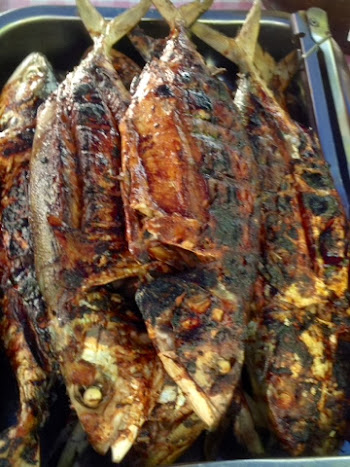Nothing says Easter like a spicy, light and fluffy homemade hot cross bun. Hot cross buns on Good Friday is an old English tradition from the early 1700s. The cross symbolise the crucifixion of Christ.
During the times of
Elizabeth I of England (1592), the sale of hot cross buns and other spiced breads were only allowed during burials, Good Friday and Christmas. Today, thank goodness, we enjoy hot cross buns at any time of the year!

It's an old belief that sharing a hot cross bun with another person ensures friendship for the coming year. If you are planning a cruise, take a hot cross bun with to protect against shipwreck or hang it in your kitchen to protect against fires.
The first batch I made while developing this recipe lacked the spicy taste which in my opinion is what makes hot cross buns special. It was also a bit skimpy on the sultanas!
Here is my final, tried and tested hot cross bun recipe to celebrate Easter and ensure your friendships all last long!
Dough
1 tablespoon dried yeast
¼ cup caster sugar
1½ cups warm milk
4 cups of cake flour
½ teaspoon ground all spice
¼ teaspoon ground nutmeg
¼ teaspoon ground cloves
½ teaspoon cinnamon
1/8 teaspoon salt
60g butter
1 egg
180g sultanas
Flour paste for the cross
½ cup cake flour
2 teaspoons caster sugar
70ml water
Sticky Glaze
1 tablespoon caster sugar
1 teaspoon gelatine granules
1 tablespoon of warm water
Directions:
Dough
1. With a whisk mix the warm milk, yeast and sugar until dissolved. Cover and leave in a warm place for 10 minutes or until the mixture is frothy.
2. Sift the flour and dry ingredients.
3. Cut or grate the butter into small pieces and rub it into the flour until no more butter pieces are visible.
4. Stir in the yeast mixture, sultanas and egg until combined.
5. Cover and leave in a warm place until the dough doubles in size. This normally takes about 45 minutes.
6. Grease a 30cm square cake pan.
7. Turn the dough out on a lightly floured surface and knead it for about 5 minutes until the dough is smooth.
8. Divide the dough into 16 pieces.
9. Roll each piece into a ball and place the balls in the cake pan about 1cm apart.
10. Cover and let it stand for 10 minutes or until they've expanded to fill the open spaces between the buns.
11. Preheat the oven to 200 *C.
Flour paste
1. Combine flour and sugar in a cup and mix with water to a thick paste. Take care not to use too much water, otherwise it'll be too runny.
2. Fill a piping bag with a plain, round, small to medium tip.
3. Pipe vertical and horizontal lines on the buns to make crosses.
 Bake
Bake
1. Bake buns for 15-20 minutes until golden brown. Tap on the buns and you'll hear a hollow sound when they're ready.
2. Turn buns topside up onto a wire rack.
Glaze
Stir ingredients till disolved then brush over the hot buns.
Storing
Cool on wire rack and store in an airtight container once cooled completely.
The quantities I used makes 16 hot and fluffy buns
Tips:
Yeast is a life organism that damage at temperatures over 46*C and are inactive in temperatures under 19*C. So don't overheat your yeast mixture. The ideal temperature for yeast to develop is 25-27*C.
Cover the yeast mixture and dough with plastic wrap (Glad Wrap). That way it won't dry out. Keep in a draft free place such as a cupboard.
Place the rolled balls in straight rows in the cake pan to make the cross easy by piping long lines over the buns instead of piping each bun individually.
If you do not have a piping bag, use a jiffy bag and cut of the tip or wax paper rolled into a funnel.
The oven temperature for this recipe is for a thermo fan oven, if using a non-fan oven heat oven to 220*C.
Never boil gelatine - doing that prevents it from setting. For a pure vegetarian version that eliminates the use of gelatine, make a sticky apricot glaze by heating apricot jam and add a little bit of water until it reaches a consistency that will be paintable.
The buns taste best after letting them stand for a day, and then serving with real butter.


.JPG)
.JPG)












































